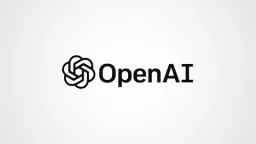ChatGPT-4o: The Next Step in AI Evolution - Is It Worth the Hype?
OpenAI continues to innovate with the release of ChatGPT-4o, an upgrade designed to redefine the capabilities of conversational AI. For AI enthusiasts eager to see what this latest version brings to the table, it's crucial to examine the new features, assess its performance, and determine if ChatGPT-4o truly meets the hype. In this comprehensive review, we will explore the significant enhancements, evaluate its strengths and weaknesses, and provide a well-rounded perspective on whether ChatGPT-4o is worth your attention.
What Can ChatGPT-4o Do?
At the time of its release, ChatGPT-4o emerged as the most advanced OpenAI model, excelling in both functionality and performance. Here are the key capabilities that set it apart:
1. Real-Time Interactions ChatGPT-4o excels in real-time verbal conversations, offering instantaneous responses without noticeable delays. This feature is particularly beneficial for applications requiring seamless and fluid communication.
2. Knowledge-Based Q&A Continuing the tradition of its predecessors, ChatGPT-4o is equipped with a vast knowledge base. It provides accurate and informative answers to a wide range of questions, making it an invaluable tool for knowledge retrieval and research.
3. Text Summarization and Generation ChatGPT-4o maintains its prowess in text-based tasks, including summarization and generation. Whether it's condensing long documents or crafting creative content, the model performs these tasks with impressive accuracy and coherence.
4. Multimodal Reasoning and Generation One of the standout features of ChatGPT-4o is its ability to integrate text, voice, and vision into a single model. This multimodal capability allows it to process and respond to a combination of data types, understanding and generating responses via audio, images, and text simultaneously.
5. Language and Audio Processing ChatGPT-4o supports over 50 different languages, showcasing advanced capabilities in language and audio processing. This multilingual support broadens its accessibility and usability across various regions and cultures.
6. Sentiment Analysis The model can accurately interpret user sentiment across text, audio, and video inputs. This feature is crucial for applications requiring sensitive and nuanced communication, such as customer support and mental health services.
7. Voice Nuance ChatGPT-4o can generate speech with emotional nuances, enhancing the effectiveness of applications that rely on expressive and sensitive communication. This capability makes interactions feel more human-like and emotionally engaging.
8. Audio Content Analysis With its advanced understanding of spoken language, ChatGPT-4o can be applied in voice-activated systems, audio content analysis, and interactive storytelling. It can analyze and generate spoken language with high precision.
9. Real-Time Translation The multimodal capabilities of ChatGPT-4o extend to real-time translation, allowing seamless communication across different languages. This feature is particularly useful in global business and travel contexts.
10. Image Understanding and Vision ChatGPT-4o can analyze images and videos, providing detailed explanations and insights. Users can upload visual content for the model to understand and analyze, making it a powerful tool for visual data interpretation.
11. Data Analysis The model's vision and reasoning capabilities enable it to analyze data contained in charts and graphs. ChatGPT-4o can also create data visualizations based on analysis or specific prompts, aiding in data-driven decision-making.
12. File Uploads ChatGPT-4o supports file uploads beyond its knowledge cutoff date. This allows users to analyze specific datasets, making it a versatile tool for customized data analysis.
13. Memory and Contextual Awareness The model has improved memory and contextual awareness, enabling it to remember previous interactions and maintain coherence over longer conversations. This feature enhances user experience by providing continuity in dialogues.
14. Large Context Window With a context window supporting up to 128,000 tokens, ChatGPT-4o can handle longer conversations or documents with ease. This makes it suitable for detailed analysis and extensive discussions.
15. Reduced Hallucination and Improved Safety ChatGPT-4o is designed to minimize the generation of incorrect or misleading information. Enhanced safety protocols ensure that outputs are appropriate and safe for users, reflecting OpenAI's commitment to responsible AI usage.
How Better is ChatGPT-4o Compared to GPT-4?
 The graph illustrates the significant enhancements made in ChatGPT-4o compared to GPT-4. Key areas of improvement include real-time interactions, multimodal reasoning, and voice nuance, where ChatGPT-4o shows substantial gains. These advancements highlight OpenAI's efforts to enhance the model's responsiveness, contextual understanding, and ability to handle diverse data types, making ChatGPT-4o a more robust and versatile tool for AI enthusiasts and professionals alike.
The graph illustrates the significant enhancements made in ChatGPT-4o compared to GPT-4. Key areas of improvement include real-time interactions, multimodal reasoning, and voice nuance, where ChatGPT-4o shows substantial gains. These advancements highlight OpenAI's efforts to enhance the model's responsiveness, contextual understanding, and ability to handle diverse data types, making ChatGPT-4o a more robust and versatile tool for AI enthusiasts and professionals alike.
Also Read: How to use ChatGPT for Image and AI Art Creation: A Practical Guide
ChatGPT-4o Voice App
One of the most exciting new features of ChatGPT-4o is the introduction of the ChatGPT-4o Voice App. This application brings conversational AI to life with advanced voice interaction capabilities. The Voice App leverages sophisticated voice recognition and synthesis technologies to provide a seamless, human-like conversational experience. Users can now engage with ChatGPT-4o through voice commands, making interactions more natural and accessible.

Features of the Voice App:
Natural Language Processing (NLP): The Voice App utilizes cutting-edge NLP to understand and respond to voice inputs accurately.
Voice Nuance Recognition: It can detect nuances in tone and inflection, enabling more expressive and contextually appropriate responses.
Multilingual Support: The app supports multiple languages, broadening its usability across different regions and cultures.
Integration with Smart Devices: The Voice App can be integrated with smart home devices, enhancing its functionality in everyday scenarios.
How to Use ChatGPT-4o
Using ChatGPT-4o is straightforward, whether you're accessing it for personal use, business applications, or research. Here are the steps to get started:
1. Accessing ChatGPT-4o To use ChatGPT-4o, you need to sign up for an account on the OpenAI platform. Once registered, you can access the model through the web interface, API, or the newly introduced Voice App.
2. Setting Up Your Environment Ensure your system meets the computational requirements to run ChatGPT-4o efficiently. This may involve configuring your hardware or opting for cloud-based solutions provided by OpenAI.
3. Interacting with ChatGPT-4o You can interact with ChatGPT-4o via text input, voice commands (using the Voice App), or by uploading files for analysis. The interface is designed to be intuitive, allowing you to type or speak your queries and receive responses in real time.
4. Customizing the Experience Leverage the personalization features to tailor responses based on your preferences. This can be done through settings available in the interface or by providing contextual information during interactions.
5. Integrating with Applications For businesses and developers, integrating ChatGPT-4o into applications can be done through the API. This allows you to embed the model’s capabilities into your customer support, data analysis tools, or any other application requiring advanced conversational AI.
6. Utilizing Advanced Features Explore the advanced features like multimodal reasoning, real-time translation, and sentiment analysis to maximize the potential of ChatGPT-4o. These features can be accessed directly through the interface or configured via the API for specific use cases.
7. Ensuring Ethical Use Always follow OpenAI’s guidelines for ethical AI usage. This includes using content moderation tools and adhering to safety protocols to prevent misuse and ensure responsible deployment of AI technology.
Performance Evaluation
1. Speed and Efficiency ChatGPT-4o demonstrates enhanced processing speeds, making interactions smoother and more efficient. This is particularly advantageous for real-time applications such as customer support and virtual assistants, where response time is critical.
2. Quality of Responses The quality of responses has significantly improved. ChatGPT-4o provides more contextually accurate and relevant answers, reducing the frequency of irrelevant or incorrect replies. However, it still occasionally struggles with highly complex or ambiguous queries.
3. User Feedback Integration OpenAI has continued to integrate extensive user feedback into the development of ChatGPT-4o. This iterative approach has led to a model that better aligns with user needs and expectations, reflecting continuous improvement and adaptation based on real-world use cases.
Potential Drawbacks
1. Computational Demands One of the primary criticisms of ChatGPT-4o is its high demand for computational resources. Efficiently running the model requires substantial hardware capabilities, which may limit accessibility for smaller organizations or individual users.
2. Cost Considerations The subscription model for accessing ChatGPT-4o’s advanced features could be a barrier for some users. Evaluating the cost against the benefits is essential for potential adopters, particularly for those with budget constraints.
Conclusion: Is ChatGPT-4o Worth the Hype?
ChatGPT-4o represents a substantial advancement in conversational AI, with notable improvements in context management, knowledge integration, personalization, and the innovative Voice App. These enhancements make it a valuable tool for AI enthusiasts and organizations seeking cutting-edge AI capabilities. However, potential users must consider the computational demands and cost implications. For those who can navigate these challenges, ChatGPT-4o offers a compelling step forward in AI evolution. Yet, casual users or those with limited resources may need to evaluate whether the benefits justify the investment.
Also Read: Crafting Your Perfect Book Cover: A Step-by-Step Guide with Midjourney & Canva









